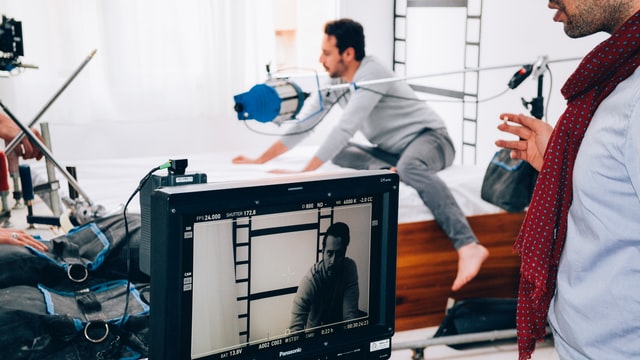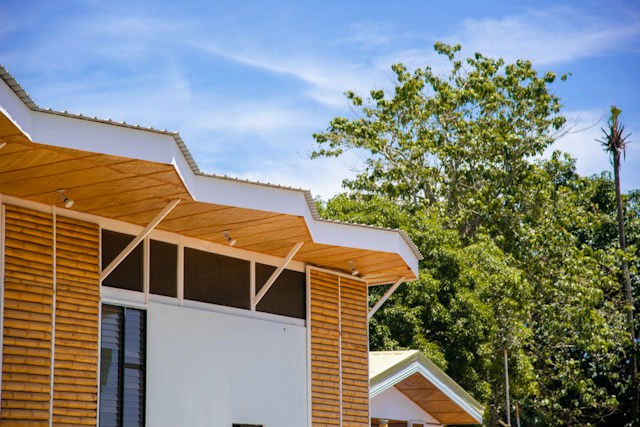A short film is any film that doesn’t have enough runtime to be considered a feature. This could be anywhere from 30 seconds to 45 minutes. On average, a short film tends to be 5–15 minutes long. Otherwise, they are no different than feature films. People generally opt to make short films because they cost a lot less than features, showcase their skills in film, or sell a concept. This was how they created the movie Whiplash. Screenwriter Damien Chazelle wanted to prove his feature film was viable, so he adapted it into a short film with the same premise.
Short films tend to fall into three distinct categories. Firstly is narrative. A narrative is a scripted short, whether fictional or based on a true story. A narrative short shows a story rather than presenting facts like a documentary. All of the Pixar short films you can watch are narrative shorts.
A documentary is another short film showcasing facts about a certain subject. These are always nonfiction and aimed to educate about topics you may be unaware of.
Lastly are avant-garde films, which are highly experimental or abstract. These focus more on mood, theme, aesthetic, or tone. You’re most likely to find these films in large film festivals, which can range widely in how an audience experiences them.
Before you roll cameras: pre-production
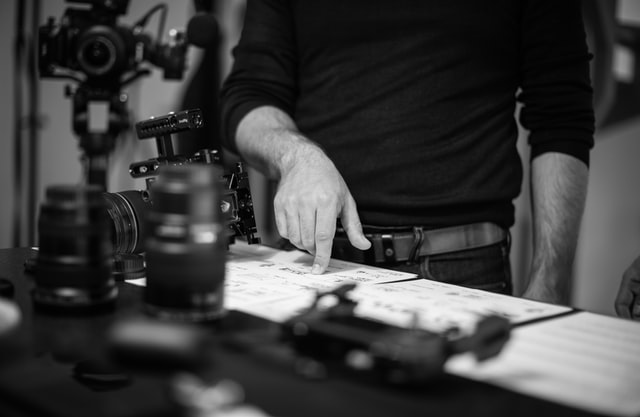
The more prepared you can be before shooting a film, the smoother your day will go. This also helps prepare your crew and cast for what is coming. The more thorough your pre-production game is, the less you will have to deal with when those cameras roll.
The Script – Writing a script can be daunting, but some basic principles make up a solid short film. You need a protagonist (the main character) whose routine is broken by a problem. You’ll want to know a beginning, a middle, throw a fun twist in here, and then have an ending. A good rule of thumb is to make your characters struggle to get what they want. If you can’t find a script but have a great idea, consider looking online for a screenwriter to come on board and help you out.
Storyboard – Storyboarding is the act of taking each scene and drawing what you want to see on a piece of paper. This shows the crew, including your cinematographer, what you envisioned. Doing this, you help get everyone on the same page, so you can work together to make your vision come to life. The best part is the drawings don’t even have to be very good. Stick figures are often a part of even the most professional storyboards.
Budget creation – A solid film budget will help ensure your film doesn’t cost far more than you expected. The best budgets will be realistic. You want to save money by utilizing your cast and crew’s time in the most effective way you can. If you have one actor at the start and end of your film, you may want to shoot their scenes side-by-side so that the actor isn’t waiting around for two days. The same principle goes for locations. It’s best to shoot everything you need in one location before moving on, rather than going back and forth. Set up takes a lot of time, and time is money. The more efficiently you can schedule your shoot, the more you’ll save in the long fun. Don’t forget to save some money for contingencies and on-set insurance.
Recruit your crew – If you’ve ever seen Better Call Saul, he’s a master of the minimalist film crew. He has his cinematographer, and he has his sound recordist. With those two people, he can record images and sounds. When it came time for Saul to grow, he found himself a makeup artist. Saul had a solid basic team, but short films are not easy to make, and some other essential crew members can make a world of difference. The executive producer will be the financier, an on-set producer will deal with any issues that arise and hopefully handle problems before they’re an emergency. A 1st AD (assistant director) is extremely useful as well. They help move the crew, schedule meals, tell everyone how long they have between takes, and keep the heat off the director so he can direct. A gaffer is in charge of lighting, and a great one can make a big difference. Don’t forget to put someone in order of the food. They will be a true hero when your crew’s morale gets low from a long day.
Casting actors – Actors (actresses also use the term actor) can be found by setting up a casting call. There are acting groups on Facebook, which is a great place to start. In your casting call, you need to explain the concept and some descriptors about the character’s personality and looks. You’ll need a time and place to watch auditions, or you can ask people to submit. If you have a budget for your cast and crew, note that in the casting call. Many filmmakers like to make their casting calls aesthetically and tonally pleasing to fit the short.
Get the proper equipment – Technology has come an extremely long way in a very short time. You no longer need to spend insane amounts of money to buy huge cameras. You can professionally shoot a lot of shorts on DSLRs or even newer cell phones. Some films shot entirely on the iPhone have been to major festivals, like Cannes Film Festival. If the budget is tight, spend it on the sound before all else. People can forgive poor visuals but can’t ignore the poor sound. Consider renting the equipment rather than buying it. You can rent professional camera equipment at Wedio — a peer-to-peer camera-sharing community.
Location scouting – This is home movie making, so your location scouting should start (and hopefully end) there. How can you re-purpose this side of the room to be something else? You can transform spaces entirely with a great set arrangement (see below). Don’t forget your yard, your garage, maybe even that attic or basement. Your home is very versatile, though you may need to move some furniture around.
Lighting and sound – We mentioned it before, but it bears repeating. Great sound is critical for the success of your short film. Cameras don’t have great sound recording built-in, but you can get directional mics that capture amazing audio for relatively cheap. You’ll need a device to record that sound. The Zoom is the most common, but there are wide varieties. These handle the sounds, so the camera can do what it does best. Three lights are generally needed for a shot: the key light that shines on your subject, the filler light that chases away the shadows, and the backlight that separates your subject from the backdrop.
Set arrangement – Also called Set Deck, or Set Dressing, this is one of the more creative aspects that go into a film that is vastly underappreciated. A set dresser will change a space from whatever it is to whatever you want it to be. They do this by reading the script, considering who the characters are, and envisioning what type of home that person lives in. Then they create it. Your living room setup will be far different if you live alone than with a family. Your kid’s toys will be different based on their age. Colors can make a big difference in aesthetics and set dressing as well.
Building something extra – If you need something specific for your set that you can’t find in the home, maybe you need something built. If you’re a DIY lover, this is a great project to take on. If not, you can always consider hiring a handyman to help you out. This gives you time to worry about other aspects that need your attention.
Special effects – For special effects, you’ll want a green screen. This is a large green canvas on which an editor can overlay whatever you want. You can have a handyman build a DIY version of this, but be sure to talk to a VFX editor in advance.
Lights, cameras, action: production
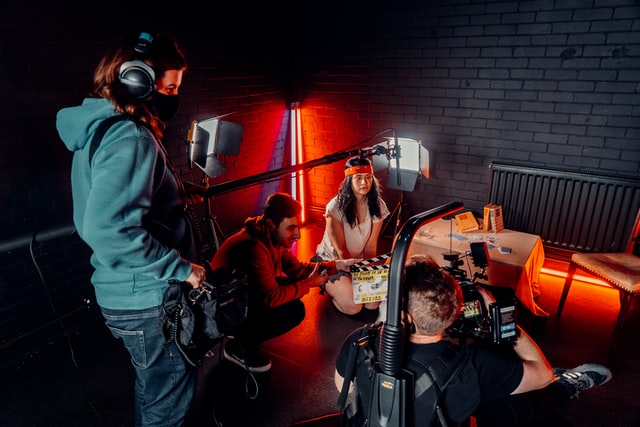
You have all your props, you’ve built your set, and your cast and crew are in place. It’s the big day! Grab yourself a coffee and get ready to watch your vision come alive. Here is some helpful advice for your shoot:
Shooting – Now that everything is in place, it’s time to shoot your film! Ensure your crew has lots of time to get set up. You’ll want a stand-in to be on set, so your cinematographer can find their frame and practice their movements. Your sound recordist may need creativity to stay out of cinematography’s way. Your gaffer will also use this opportunity to light the scene. While all this is happening, ensure your cast is in makeup so they’re ready to go when you are. Once you walk them through the scene (this is called blocking), so they have it down pat, it’s time to roll. Be sure to grab multiple takes, even if the first one was perfect. Things can go wrong, and it’s always good to have at least two options for a specific take. Finally, ensure you have more footage than you think you need. In the edit, you may need to cut away from an actor for several reasons, and you’ll want the footage to fill that gap.
Directing – As the director, you’re trying to evoke an emotional response from your audience. This will dictate your choices in framing, camera movement, set decoration, lighting, and how you ask the actors to deliver their roles. Be sure to know what shorts are of absolute importance versus shots you merely want. If you are on schedule, grab them all, but if you’re running behind, you may need to make sacrifices. Let your collaborators be the experts in their field. If your sound recordist says they picked up a flying airplane, you should heed them, whether you heard it or not. Your people will want to give their best, so listen to them. Be open to others’ ideas, thoughts, and concerns. The cast and crew will match your tone on set, so strive for hard-working, professional, courteous, and approachable.
Magic is made in the editing room: post-production
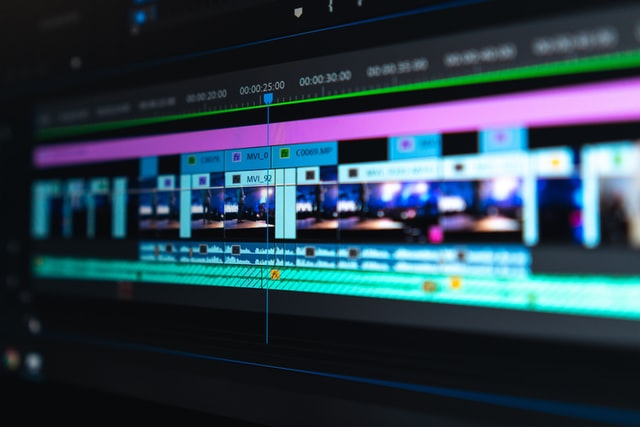
Now that you have all your footage and it’s backed up in two separate locations (trust me on this one), you can start editing. Step by step, you’ll see your footage transform into an entire film. It can be a slow process. Don’t try to rush it. A good edit takes a lot of time and is always worth it.
Editing – The Rough Cut – This is where you will want to find your best takes and put them all together. While doing it, you’ll want to sync your audio to each clip before cutting anything. Get the film, so what you want is on there. It will probably be a bloated, awkward mess — that’s okay; it’s a rough cut. From here, you want to really slim that cut-down. Enter all your scenes late, and leave them early. You’ll be amazed at how much you can cut from a film and improve it. Brevity is vital in your edit, and you’ll find that as you continue to go through it or show it to people, you’ll get better feedback for the more efficient it’s told.
Sounds and colors – Once you have a cut you like, this is the time to add music. It provides tone and can help build on the emotion in specific scenes. This is also where you’ll want to color edit your movie. Is your film bright and vibrant, almost surreal in its color palette? Or are the colors muted? One season of the TV Series Fargo took the color blue out of one entire season to ensure it looked different than anything else before it.
Final Cut – Once you have your scenes appropriately cut down, your music and sound effects in place, and your colors adding to your tone, have someone watch it with fresh eyes. Does the film affect them the way you’d hoped? Do they see anything you might have missed? Do they have questions or concerns? Be sure to get extra eyes on it. It’s always someone who’s never seen it before, who will find a flaw hiding right before your eyes.
Once you’ve shown it to a few people, and are getting the feedback you were looking for, give the film one last viewing. How does it look? How does it sound? Is it ready to be sent to festivals or uploaded to Youtube? Trust your gut, and trust your collaborators on this one.
It’s more possible than ever to make a short film in your home. There are a lot of creative solutions to all aspects of filmmaking, and it’s never been easier to record and edit a movie within a small budget. If you’re brimming with aspirations, nothing is holding you back.
